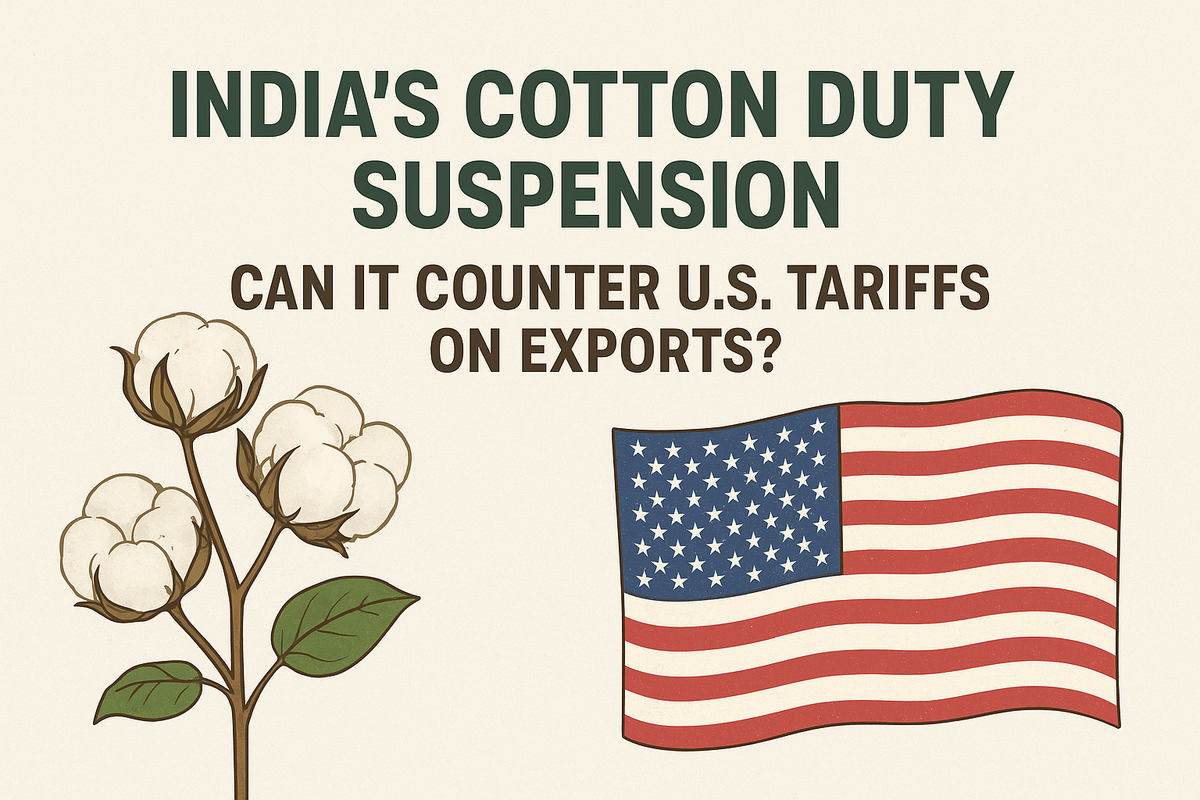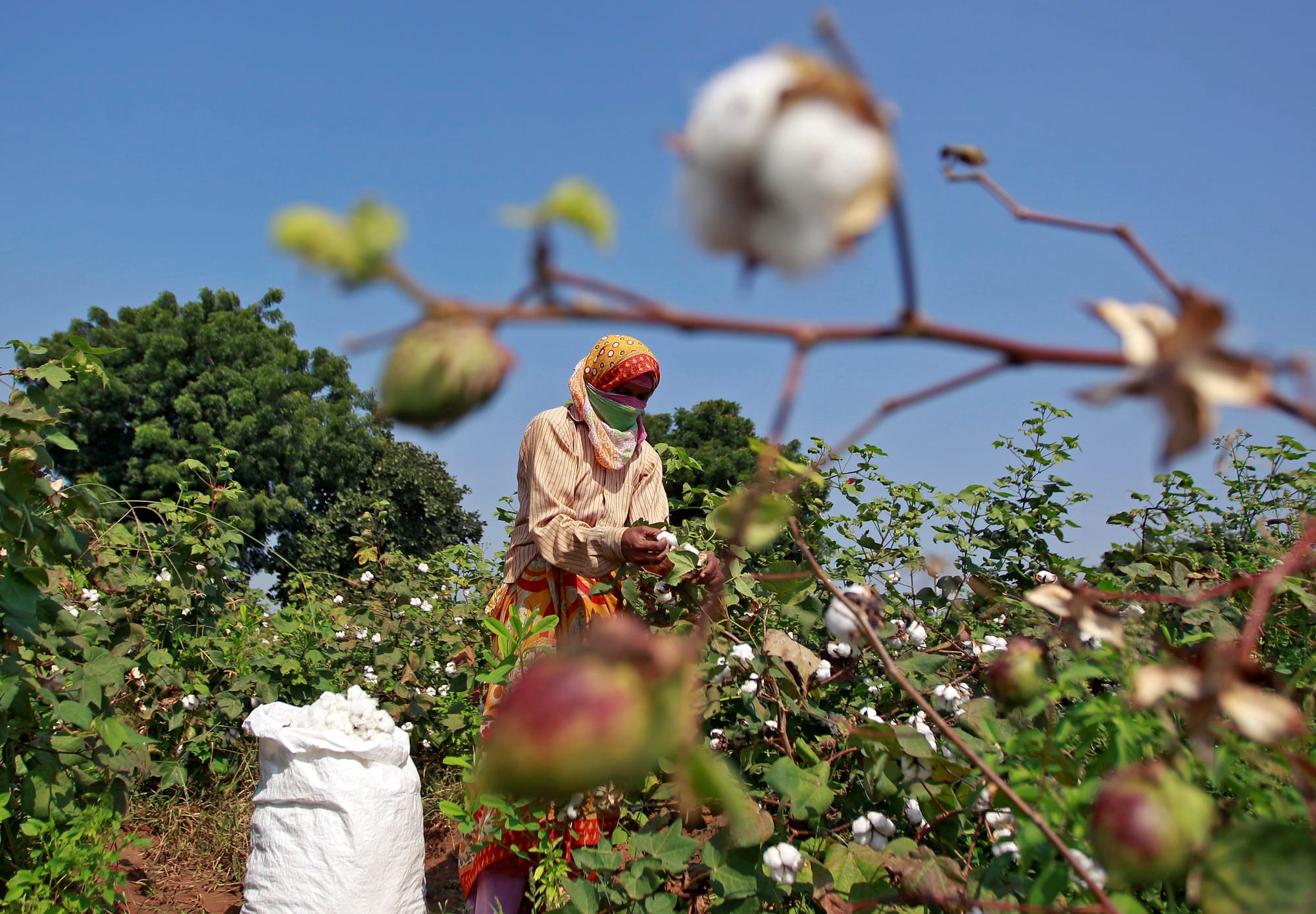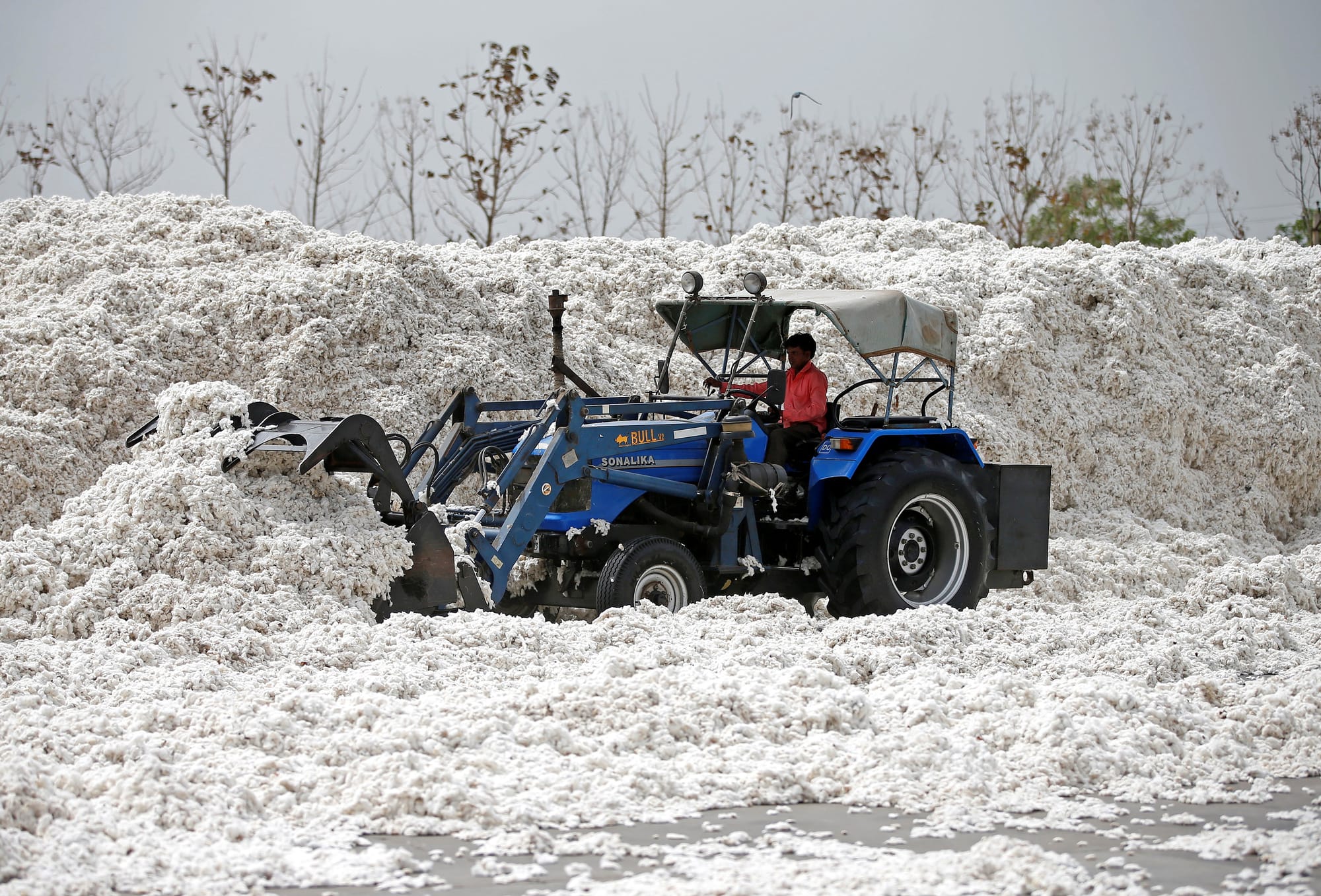India’s Cotton Duty Suspension: A Strategic Gambit to Counter US Tariffs?
India's recent suspension of cotton import duty is a tactical response to crippling US tariffs. But can this move truly shield the textile industry?

Written by Lavanya, Intern, Allegedly The News
NEW DELHI, August 19, 2025
In a decisive and unexpected move, the Indian government has temporarily suspended the 11% import duty on raw cotton, a policy shift that has sent a powerful message to both domestic industries and international trade partners. This calculated step comes as India's textile sector, a vital pillar of its economy and a major employer, faces an existential threat from an unprecedented 50% tariff imposed by the United States. The question on every analyst's mind is not just whether this measure will provide a much-needed lifeline, but whether it is a single-issue fix or a microcosm of India’s broader, more sophisticated strategy for navigating a new era of global trade.
The Looming Crisis: U.S. Tariffs and a Tattered Textile Sector
The recent imposition of a 50% tariff on a significant portion of Indian goods by the U.S. is a direct consequence of escalating geopolitical tensions, specifically India's sustained purchases of Russian oil. For the textile and apparel sector, which accounts for over 8% of India's total exports and employs over 45 million people, the impact has been nothing short of catastrophic. The effective tariff rate now puts India at a severe disadvantage, far higher than the rates faced by competitors like Vietnam (20%) and Bangladesh (18%), who enjoy more favorable trade relations with the U.S.
The immediate aftermath has been brutal. According to the Cotton Association of India (CAI), purchases of cotton yarn have plummeted by 50% since the tariff was announced. Exporters face widespread order cancellations and are being forced to renegotiate prices, often at a loss, to retain key clients. Some smaller firms are on the brink of closure, and estimates suggest that up to 300,000 jobs across various export-dependent sectors, including textiles, are at immediate risk.
The government's response—the temporary suspension of the cotton import duty—is a direct and targeted measure to lower input costs for manufacturers. Previously, the 11% duty had made domestic cotton prices uncompetitive on the world stage, forcing many textile companies to either absorb losses or shift to cheaper, often lower-quality, alternatives. By removing this barrier, the government is essentially subsidizing the industry from within, allowing it to better absorb the external shock of the U.S. tariffs. It's an act of economic jujitsu: instead of directly retaliating, India is using internal policy to nullify a foreign trade measure.
A Tale of Two Industries: From Cotton to Silicon
What makes India’s response so fascinating is that the cotton duty suspension is not an isolated policy. It is happening in parallel with a massive push in high-tech manufacturing, most notably in the electronics sector. The cornerstone of this effort is the Production-Linked Incentive (PLI) scheme, a visionary program that offers financial incentives to companies based on their incremental sales from products manufactured in India.
The results, particularly with American tech giant Apple, have been transformative. Since launching in 2020, the PLI scheme has turned India into a key player in the global electronics supply chain. Apple's manufacturing partners, including Foxconn, Pegatron, and most notably, the Tata Group, have invested billions in setting up large-scale iPhone assembly plants. These investments have not only boosted India's electronics exports but have also created a robust ecosystem of ancillary suppliers.
The economic and employment impact is immense. According to official data, Apple's ecosystem alone has created over 200,000 direct jobs, with a remarkable 70% of these positions filled by women. The broader ecosystem, including indirect jobs, is projected to reach over 600,000. For the first time, India is not just a market for tech products; it is a global manufacturing hub. The recent Bloomberg report that Apple plans to manufacture its entire U.S.-bound iPhone 17 lineup in India ahead of its global debut is a watershed moment, solidifying India’s status as a critical manufacturing base for one of the world’s most valuable companies.
Interconnected Strategies for Economic Self-Reliance
The simultaneous push in two seemingly disparate sectors, textiles and technology, is a deliberate and sophisticated strategy. Both are critical for different reasons and collectively form the bedrock of India's "Atmanirbhar Bharat" (Self-Reliant India) mission.
- The Textile Sector: Represents a traditional, labor-intensive industry that provides mass employment and sustains a vast number of small and medium enterprises (SMEs) across the country. By protecting this sector, the government is safeguarding millions of jobs and a significant portion of its export revenue. The cotton duty suspension is a perfect example of using internal policy to buffer a legacy industry against external shocks.
- The Technology Sector: Symbolizes India's future. By attracting global giants like Apple, India is not just building factories; it's building a high-tech ecosystem. The goal is to move up the value chain, from simple assembly to complex component manufacturing and design. The success of the PLI scheme demonstrates that India can compete for and win high-value manufacturing projects on a global scale.
This dual-track approach is designed to expand India's global market share and build a more resilient and powerful economy. It’s a vision where India is a critical node in both the traditional and high-tech supply chains. By becoming an indispensable manufacturing partner for diverse industries, India aims to increase its leverage on the global stage, making it more difficult for trade partners to impose unilateral tariffs without facing consequences.

The "India First" Economic Doctrine: Debating the Impact
The success of this strategy, however, is not a foregone conclusion. While the short-term relief from the cotton duty suspension is clear, some experts question its long-term viability.
Is This A Long-Term Solution for the Textile Industry?
The duty suspension is a temporary measure, set to expire on September 30. This raises a crucial question: What happens next? The government has to balance the needs of textile exporters with the interests of domestic cotton farmers, who could see their prices fall due to increased imports. A prolonged suspension could hurt the agricultural sector, which is another major employment base. The policy, while effective as a temporary fix, does not address the fundamental challenges of the textile industry, such as outdated technology, a chronic labor shortage, and the need for new export markets.
Will the Benefits Reach the Common Man?
A central tenet of the cotton duty suspension is the hope that cheaper raw materials will eventually translate into more affordable clothing for the Indian public. However, many analysts are skeptical. They argue that the primary beneficiaries will be the large-scale exporters who need to maintain their profit margins to compete internationally. The savings from the duty could be absorbed into their bottom line rather than being passed on to consumers, particularly given the high domestic demand.
Can High-Tech and Traditional Industries Coexist and Thrive?
The success of the Apple model is undeniable, but it is also a cautionary tale. High-tech manufacturing is capital-intensive and requires highly skilled labor. While it creates jobs, the sheer number of jobs may not be enough to absorb the millions of workers in a labor-intensive sector like textiles. India must ensure that the skills gap is bridged and that the economic benefits of these high-tech investments are not limited to a few urban centers. The challenge lies in replicating the PLI success for other sectors and ensuring a more balanced and inclusive growth model.

Bold Questions for the Future
As India navigates this complex geopolitical and economic landscape, several critical questions emerge:
- Questioning the Pivot: With the U.S. tariffs serving as a powerful catalyst, will India accelerate its pivot away from Western markets and toward new trade blocs and agreements with countries in the Middle East, Southeast Asia, and Africa? Is this a one-off measure, or is it a sign of a fundamental shift in India’s trade diplomacy?
- The Manufacturing Conundrum: Can India's infrastructure and logistical capabilities keep pace with the ambitions of both its traditional industries and the demands of high-tech manufacturing? What will be the long-term impact on the country's energy grid, transportation network, and skilled labor force?
A Takeaway: The 'Strategic Non-Alignment' Theory
India’s recent policy actions suggest a new economic doctrine of "Strategic Non-Alignment". In a world of rising trade barriers and geopolitical friction, India is not choosing a side. Instead, it is fortifying its internal economy by leveraging its unique strengths in both traditional, labor-intensive manufacturing and cutting-edge high-tech production. The cotton duty suspension is a tactical response to a specific threat, but it is part of a larger, more ambitious plan. By making itself an indispensable part of global supply chains for a diverse range of products, from the fabric on your back to the phone in your hand, India is building a resilient economy that is less vulnerable to external pressures. The goal is to move from being a recipient of global trends to a shaper of them.
Sources
The Economic Times, The Times of India, and official data from the Ministry of Textiles and the Government of India's Press Information Bureau.




